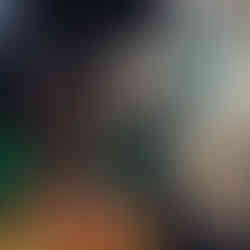Baking soda and balloon experiment
- Sophia Vidovic White
- Feb 24, 2019
- 3 min read
Thursday 31st May,
Young children are naturally curious and passionate about learning (Raffini, 1993). In their pursuit of knowledge, they’re prone to poking, pulling, tasting, pounding, shaking, and experimenting. “From birth, children want to learn and they naturally seek out problems to solve” (Lind, 1999, p. 79). Young children should be involved in “sciencing” versus the learning of scientific facts presented by others (Kilmer & Hofman, 1995; Mayesky, 1998; Zeece, 1999). Sciencing is a verb and suggests active involvement. Such involvement should be both hands-on and minds-on in nature. Thus, children should be engaged both physically and mentally in investigating and manipulating elements in their environment (Chaille & Britain, 2003; Kilmer & Hofman, 1995).
Within the Pre Kinder room we would like to promote the development of scientific thinking. Within our classroom we aim to support children in practicing and applying scientific thinking within a variety of activities throughout the year. We want to show sincere interest in children’s observations and predictions by providing a variety of materials and settings that invite experimentation. We can observe our children developing certain attitudes or dispositions central to scientific inquiry and discovery. These include curiosity, a drive to experiment, and a desire to challenge theories and to share new ideas. Key ingredients for a supportive environment include, a variety of interesting materials for children to explore and manipulate, unstructured time for children to develop and test their own ideas, and a social climate that tells the children that questions and experimentation are as valuable as knowing the right answers.
Today our children are learning specifically learning about gas and chemical reactions by discovering how to inflate a balloon using baking soda and vinegar. The goal of the project is to demonstrate the power of gas produced when of baking soda and vinegar are mixed. The goal is for the balloon to be blown up by the gas created. Our materials included balloons, vinegar, baking soda, small voss water bottles and a small funnel.
We wanted to ask the children:
+ What do you think will happen when baking soda and vinegar are mixed together? What does it make?
+ What do you think will happen to the balloon attached?
+ Why does the balloon stop blowing up (why does the reaction stop)?
We used the funnel to add the baking soda to each balloon. We then poured the vinegar into the bottle and then carefully fit the balloon over the bottle opening (be careful not to drop the baking soda into the vinegar yet). Once the balloon was fitted snugly on the nozzle, we held up the balloon and allowed the baking soda to fall into the vinegar. As the chemical reactions occurred we observed the changes at the beginning, middle and end of the experiment.
We loved mixing everything together and watching as the reaction creates carbon dioxide and inflates the balloons!
The science behind it demonstrates that baking soda and vinegar when mixed together, create an acid based reaction. This reaction creates carbon dioxide gas that bubbles up from the mixture. The gas expands up and out of the bottle and inflates the balloon. The children made observations and noticed that with vinegar, the bigger the balloon will get. “Put more of this in, bigger explosion.” Said Sophie N. “Look at that, the balloon is getting bigger and bigger…it’s exploding.” Said Gus.
To foster scientific thinking, we ask reasoning based questions with ‘Why do you think?’ and ‘Can you explain that?’. We asked comparison questions ‘How are they alike?’ ‘How are they different?’ In addition, we asked measuring and counting questions with ‘how much?...how many?...how heavy? Asking productive questions provoke thinking and provide a bridge between what the children already know and what they experience through an activity.
As we have integrate science based activities into our curriculum, we have discovered that science already occurs in what children already do and how they think about what they do. As our children experiment with a mixture of bi-carb and vinegar, they are making observations and predictions. “It’s going to the top…come up.” Said Gus as a prediction. “The balloon is growing.” Answered Jonny in his observation. “The ballon is getting bigger…the air is going in.” Found Sophie N.
The children here are building theories and testing those theories.
These physical and mental manipulations represent the essence of what science is all about. We hope to extend on science concepts by exploring density with water and oil, the concept of absorption with paper towels, gravity with kite flying and growing crystals.
































Comments